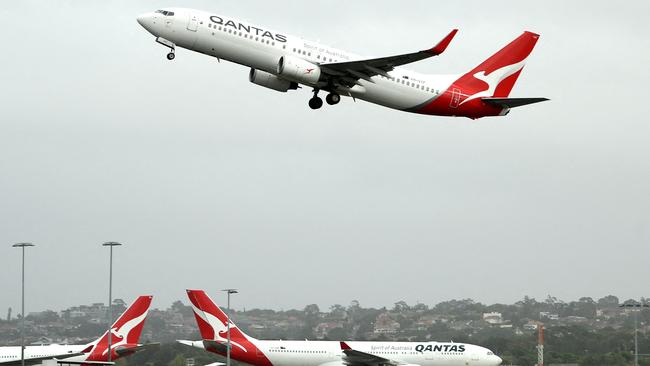The future of flying is bumpy as meteorologists warn climate change will increase turbulence
Research shows turbulence will only get worse as the world continues to warm - after a Singapore Airlines flight from London was forced to make an emergency landing in Bangkok.

Business
Don't miss out on the headlines from Business. Followed categories will be added to My News.
Every year dozens of people are injured on flights due to clear air turbulence and research suggests it’s only going to get worse as the earth continues to warm up.
Since 2003, 556 people have been injured in 372 incidents of turbulence in flight, according to Australian Transport Safety Bureau data.
In one of the most recent events, seven people were injured when a QantasLink flight from Brisbane to Hervey Bay struck severe and unexpected turbulence on February 1.
While pilots are usually aware of turbulence thanks to weather forecasts and air traffic control, clear air turbulence is a different matter.
The phenomenon is called “clear air” because the sudden change in wind speed or direction that causes the turbulence typically occurs at high altitude in areas free of cloud.
For that reason, clear air turbulence tends to take pilots by surprise, resulting in sudden drops in altitude and potential injuries to passengers and crew.
Weatherzone meteorologist Yoska Hernandez said unfortunately the jetstreams that produced clear air turbulence were expected to intensify as climate change evolved, leading to a 150 per cent increase in the next century.
“Jetstreams are bands of intense, very strong winds flying from west to east in the atmosphere, and they’re caused by temperature differences between the polar and tropical regions,” Ms Hernandez said.
“As greenhouse emissions increase, the temperature differences strengthen in the upper atmosphere and that causes an increase in the intensity of the jet stream.”
A 2019 study by Oxford-educated physics professor Paul Williams brought the issue into focus, revealing the amount of wind shear in the jet stream had already increased 15 per cent since 1979.
Ms Hernandez said as well as producing bumpier flights, faster moving jetstreams could have other impacts on flying.
“As jetstreams become accelerated, flights from west to east will be shorter but those heading east to west will be considerably delayed because they’re going against the stream,” she said.
“That will have consequences for the flight time and fuel consumption in some cases.”
More studies were underway in Europe and the US examining clear air turbulence in response to reports of more clear air turbulence.
However Australian and International Pilots Association president Tony Lucas, a Qantas A330 captain, said in 28-years of flying he had not experienced any worsening of weather conditions.
“It would be hard to know if there had been an increase in turbulence-related events or if it’s just a case of air traffic increasing,” said Captain Lucas.
“For us, it doesn’t change how we deal with it. We still plan our flights on the most efficient route and deal with turbulence if it happens to occur.”
He said what had improved in the last 28-years was the accuracy of weather forecasts supplied to pilots the best approach for passengers was to remain in their seat as much as possible throughout a flight with their seat belt fastened on.
“I frequently say to passengers I keep my seatbelt on for the whole flight and I do that for my safety and it’s probably pretty sensible for them to do the same thing,” he said.
“Because while the (weather) are getting more accurate, sometimes it’s wake turbulence from the aircraft in front, that descends and drifts on the wind. That can cause the autopilot to disconnect, it’ll disturb the aircraft that much.”
It was unlikely weather forecasters would ever be able to accurately predict clear air turbulence because there was “nothing to trace it”, said Ms Hernandez.
“There’s no clouds, there’s just clear skies,” she said.
“That’s why it’s so dangerous.”
More Coverage
Originally published as The future of flying is bumpy as meteorologists warn climate change will increase turbulence





